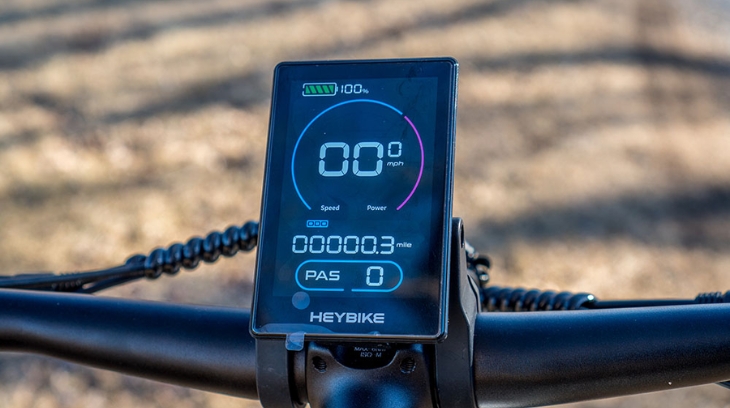Governments are investing in clean mobility infrastructure, consumers are demanding eco-friendly commuting options, and companies are aligning their operations with environmental goals to meet both market and regulatory expectations.
For businesses, this shift presents an expansive landscape of opportunities. From e-mobility products and smart infrastructure to software platforms and battery lifecycle services, the green commuting revolution is opening real revenue streams.
This is not limited to EV manufacturers or tech giants; small and mid-sized companies can tap into the rapidly growing demand, especially in cities, campuses, and regional hubs adopting low-emission transport policies.
Table of Contents
ToggleEV Charging Infrastructure Deployment and Management

As electric vehicle (EV) adoption continues to accelerate globally, the pressure to scale charging infrastructure has intensified. In 2025, more than 60% of new passenger vehicle sales in the EU and nearly 45% in the U.S. are electric or hybrid.
However, charging access remains uneven, especially outside of urban centers.
Businesses that deploy Level 2 and DC fast-charging stations, particularly in residential buildings, office parks, shopping centers, and transit hubs, are creating long-term, recurring revenue streams. Even more value is unlocked when charging hardware is paired with smart grid integration, reservation systems, or user-facing apps.
Area of Opportunity
Example Solutions
Hardware Installation
Public charging stations, wallboxes
Software Layer
Load balancing, dynamic pricing
Fleet Partnerships
EV-ready infrastructure for logistics
Advertising Integration
Monetizing charger screens or apps
Companies that can bundle installation, service, and software have a competitive advantage in winning B2B and municipal contracts.
Urban Mobility: E-Scooter and E-Bike Sharing Systems
City planners are phasing out reliance on personal cars and encouraging low-emission transport. This has made shared mobility, especially e-scooter and e-bike rental platforms, a critical part of urban infrastructure.
Businesses operating these fleets are benefiting from high-frequency use, contactless payment models, and flexible deployment zones.
The most successful operators in 2025 use geofencing, AI route suggestions, and real-time fleet tracking to optimize availability and maintenance cycles.
In smaller cities and universities, franchise or white-label models are emerging, giving local businesses access to this growing market without high development costs.
Business Model Type
Key Benefit
Public-Private Model
Partnering with municipalities for access
Campus/Workplace Model
Internal fleet for student or employee use
Franchise Sharing
Small businesses lease operational rights
Insurance, theft prevention, and charging logistics remain challenges, but also areas for innovation and investment.
Last-Mile Delivery Using Electric and Hybrid Vehicles
With e-commerce volume at record highs, last-mile delivery is now responsible for a large portion of urban emissions. Companies in logistics, warehousing, or local delivery have a clear incentive to adopt cleaner fleets.
Electric vans, cargo bikes, and hybrid delivery units are increasingly replacing traditional fuel vehicles.
Green delivery services are particularly appealing to eco-conscious consumers, and several large retailers are now requiring logistics partners to meet carbon-reduction benchmarks. Businesses that offer last-mile logistics powered by clean vehicles can secure contracts with major platforms and local governments.
Transport Method
Typical Use Case
E-Cargo Bikes
Deliveries in urban cores or zero-zones
Small EV Vans
Retail orders, pharmacy, or grocery drops
Hybrid Fleet Conversion
Cost-effective transition model
Delivery companies are also integrating real-time CO₂ savings dashboards to boost customer transparency and ESG reporting.
Manufacturing and Retail of Green Commuting Products
Consumer demand for electric and compact commuting solutions is soaring. The global market for personal mobility devices is expected to exceed $130 billion by 2026.
Lightweight and functional electric transport products, including scooters, skateboards, and e-bikes, are in particularly high demand in urban and student-heavy areas.
One standout category is collapsible e-bikes, which combine electric mobility with extreme portability. Designed for commuters who take mixed transport (train + bike, car + bike), these units fold in seconds, are light enough to carry up stairs, and are often compatible with public transport storage rules. They appeal to city workers, students, and travelers alike.
Businesses that sell, lease, or manufacture collapsible e-bikes are capturing a market segment that prioritizes flexibility, low maintenance, and eco-friendliness. Accessories like quick chargers, smart locks, and GPS trackers offer additional profit potential.
Product Segment
Customer Value
Collapsable E-Bikes
Easy storage, ideal for tight spaces
Lightweight Scooters
Fast and maneuverable for city traffic
Solar Charging Kits
Off-grid recharging for mobile users
Retailers that offer subscriptions or service bundles are also improving long-term retention and product lifespan.
Corporate Green Commute Benefits Platforms
View this post on Instagram
A post shared by Sustainable Wedding Alliance | B Corp (@sustainableweddingallianceuk)
As companies aim to reduce employee carbon footprints, many are offering benefits that encourage sustainable commuting. This includes e-bike subsidies, public transport credits, carpool matching tools, and EV charging access.
The result is a demand for third-party platforms that manage, verify, and track these benefits.
Startups and SaaS providers are stepping in to offer customizable solutions for HR departments and sustainability teams. These platforms handle everything from tax reporting to CO₂ tracking and route planning for employees.
Platform Feature
Use Case
Benefit Management
Assign credits for bikes, passes, and carpool
Carbon Tracking
Visualizes emissions saved by users
Compliance Reporting
Aligns with ESG or local government rules
B2B SaaS companies in this niche are well-positioned for rapid adoption across both small enterprises and multinationals.
Apps for Green Navigation and Commuting Optimization
Commuting on foot, bike, or scooter requires different routing logic than driving. Mapping tools that account for bike lanes, elevation changes, air quality, and weather are increasingly essential.
Commuters want routes that are not just fast, but safe and sustainable.
Businesses that build or white-label green navigation apps are helping cities promote multi-modal transit. These apps also help users find charging docks, scooter drop-off points, or covered parking.
App Feature
Advantage
Air Quality Data
Reroutes away from heavy traffic areas
Secure Parking Map
Shows bike/scooter lock-up zones
Elevation-Aware Routing
Ideal for cycling commutes
Combining this with transit schedules or ride-sharing APIs boosts utility for end users.
Battery Recovery and Recycling Services

The rapid increase in e-mobility comes with a critical issue: battery waste. Lithium-ion batteries degrade over time and contain valuable materials like cobalt, nickel, and lithium.
Recycling these batteries can be both profitable and environmentally critical.
Companies that specialize in battery recovery, through local collection, processing, or partnerships with manufacturers, are developing circular supply chains that reduce e-waste and lower raw material costs.
Service Model
Benefit
Battery Buyback
Incentivizes returns from end users
Material Extraction
Profitable resale of core components
Refurbished Packs
Reuse for backup power or non-critical uses
Several governments offer grants or credits for businesses operating in this space, increasing margins and reducing upfront costs.
Fleet Management Software for Electric Vehicles
Businesses operating EV fleets, including delivery services, ride-share apps, and campus transit systems, need software that tracks charging status, vehicle health, mileage, and performance.
Generic fleet software often falls short for electric fleets, where battery range and charge cycles are critical.
Fleet tech providers that specialize in EV logistics are in high demand. Platforms that offer predictive maintenance, driver scoring, and optimal route planning for range efficiency are being adopted rapidly.
Feature
Fleet Use Case
Real-Time Battery Telemetry
Avoids mid-route failures
Driver Efficiency Scoring
Encourages safe, low-drag driving
Charging Cycle Alerts
Prevents battery degradation
These systems also help companies meet compliance with emissions caps and fuel economy targets.
Final Takeaway

The green commuting revolution is creating real business opportunities across hardware, software, and service industries. Consumers and enterprises alike are demanding smarter, cleaner, and more efficient mobility solutions.
Whether your business is focused on urban infrastructure, personal devices like collapsible e-bikes, or backend logistics software, there’s a clear and growing market for sustainable transport solutions.


